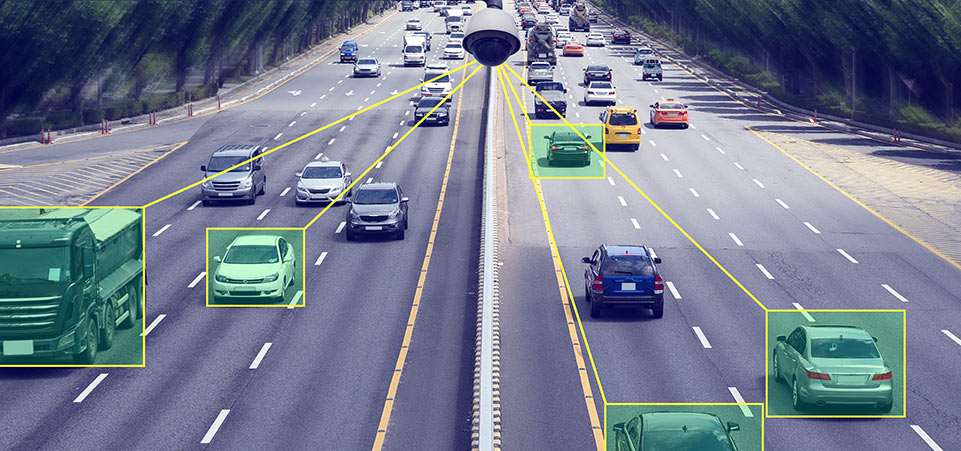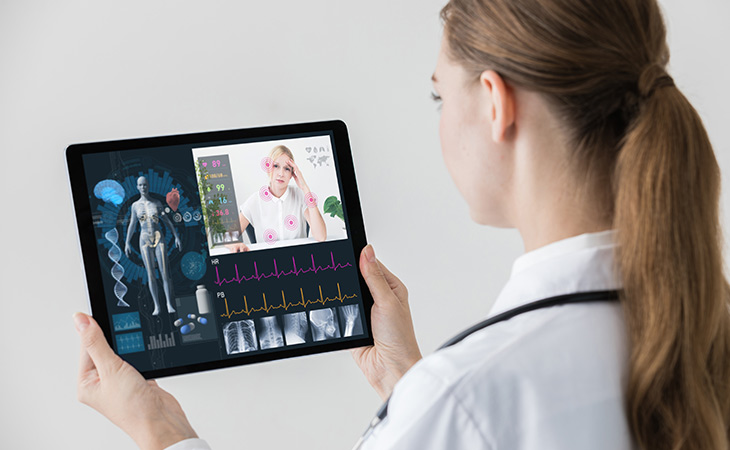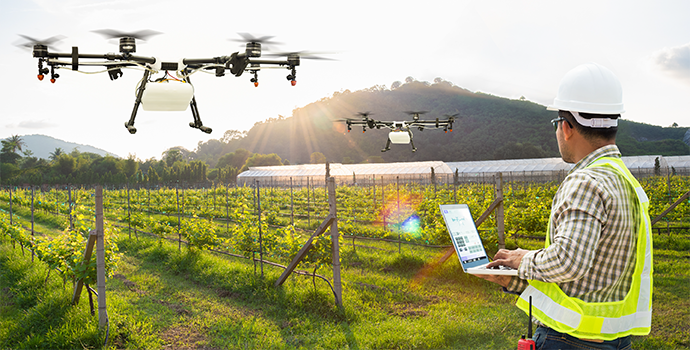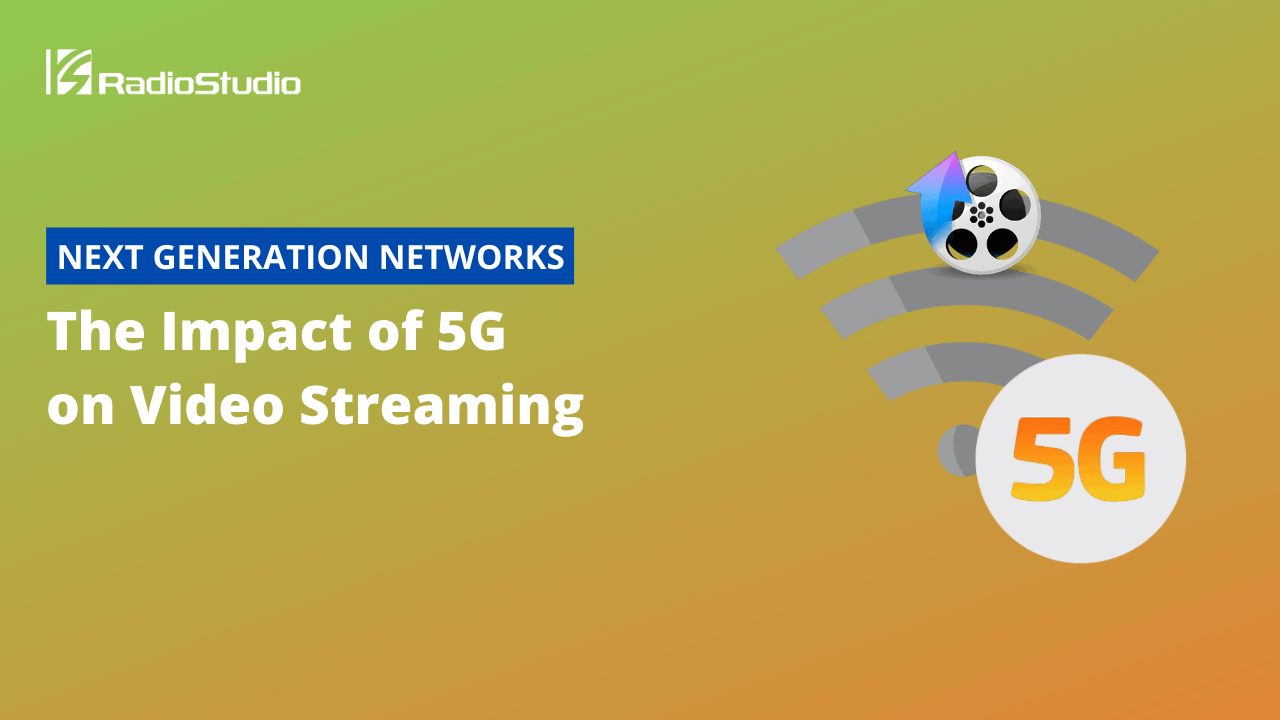5G — the fifth generation of mobile communications — has been a tech buzzword for several years. And like any other overused term, it’s a difficult concept to pin down. Is 5G the next best thing for internet connectivity or the cause of COVID-19’s deadly spread across the world?
This post was originally published in Wowza.
It (hopefully) goes without saying that any conspiracies linking the pandemic to 5G technology are unfounded. Even so, the two global phenomena — 5G and COVID-19 — share some things in common. For one, they both use an acronym made up of letters and numbers as their name. They’ve also both been hot topics of discussion despite a lot of unknowns.
The reason for this is simple: Just as we couldn’t have predicted the outcome of COVID-19 in early 2020, we still don’t know what widespread use of 5G technology will look like. Google “5G will…” and you might see the following suggested queries.

Adoption of the technology has even been labeled the 5G revolution. But it bears noting, this development is very much an evolution.
First there was 1G in the 1980s, then came 2G and the ability to send text messages. By the late 1990s, we were gifted 3G, which brought data into the picture. And today, we use the speedier 4G LTE when connecting on the go. 5G will be the next step.
So, What Do We Know About 5G?
Here’s what we do know. 5G, the next generation of cellular technology, was designed to bring landline speeds to mobile devices. Fundamentally, it’s all about bandwidth. With more bandwidth, we’ll get faster upload and download speeds. This translates to improvements in wireless capacity, more robust mobile connectivity, and decreased latency.
5G Benefits
- Decreases Latency: While human reaction time is more than 200 milliseconds, 5G is expected to send and receive information in one millisecond or less. When it comes to streaming, this means that digital objects will be able to replicate real-time interactions.
- Improved Cellular Coverage: For both indoor and outdoor cellular coverage, 5G will deliver a more reliable and consistent experience to users.
- Supports Mobile-First Applications and Richer Experiences: 5G will extend advanced streaming capabilities (augmented reality, interactivity, artificial intelligence) beyond the home to include mobile users without a Wi-Fi connection. Connectivity improvements will remove barriers to using streaming for various applications via mobile and connected devices.
- Democratizes Video: What was once the purview of professional broadcasters — plenty of processing power and high-speed connectivity — will be accessible to everyone once 5G is in place. There will no longer be a need to invest in expensive infrastructure like satellite trucks and content distributors will have much more flexibility in how they go about video production.
- Increases Capacity: Designed to support a 100x increase in traffic capacity, 5G lays the groundwork for complex wireless ecosystems made up of intelligent street sweepers, connected cars, and other autonomous devices communicating in real time.
- Improved Battery Efficiency: Improvements in coverage will minimize the computing resources required to watch a video. 5G will allow viewers to stay connected to live streams in traditionally poor service zones — without it being a crazy drain on battery life.
The Role of Low-Latency Video Streaming
Latency is all the rage in the world of video delivery, which is why many predictions about 5G focus on live and interactive streaming capabilities. Simply put, 5G’s promise of high-capacity, low-latency connectivity will be a content delivery game-changer.
But this won’t happen overnight. Realizing the benefits of 5G requires new network infrastructure and 5G-enabled end-user devices. Coverage will also vary from provider to provider, and a spectrum of frequency categories (low-band, mid-band, and high-band) will characterize each network.
Cisco predicts that 10 percent of mobile devices will be 5G-capable by 2023, with speeds 13 times higher than the average mobile connection. A good chunk of the devices leveraging 5G won’t live in consumers’ pockets either. The internet of things (IoT) — made up of Amazon’s delivery drones, connected fitness trackers, and intelligent traffic lights — will become much more complex with the rollout of 5G.
5G Video Streaming Use Cases
5G promises to transmit information in one millisecond or less, thereby enabling digital objects to surpass humans’ reaction time. Applications that were once no more than science fiction will become commonplace once 5G takes over.
Basically, 5G will support everything we’re already doing with streaming, while making it faster, higher quality, and more mobile. Yes: It’s ultimately about speed. But the faster a device can send and receive data, the better the quality will be. So really, 5G just allows us to push the boundaries further and explore limitless streaming applications.
IoT and Smart Ecosystems
“5G is the foundation for realizing the full potential of IoT,” writes Paolo Collela, VP of digital services at Ericsson. “It is evident that 5G will spur innovation across many industries and provide a platform enabling emergent technologies such as the IoT to become an integral part of our economy and lifestyle.”
The integration of 5G-enabled devices promises to automate tasks like never before. For instance, self-driving cars will communicate with other vehicles, traffic lights, sensors, and drones. In these scenarios, any delay could mean the difference between the seamless flow of traffic and a deadly car crash.

And that’s where streaming once more comes into play. For many IoT devices, low-latency video streaming is a crucial capability. Just imagine a future built on this technology. Beyond tuning into Netflix from your self-driving Tesla, you’ll likely be relying on a dashcam with object detection capabilities to navigate the roads. Likewise, you’ll use your smartwatch to check your home doorbell camera, and the smart building where you work will use real-time surveillance technology to ensure employee safety and public health.
Virtual Healthcare
If autonomous vehicles are the most popular prediction when discussing 5G, remote healthcare capabilities are a close second. Both long-distance endoscopy training and tele-endoscopy have become prevalent recently, and remote patient monitoring now brings medical expertise to rural populations. Expect to see augmented reality (AR) and virtual reality (VR) powered surgeries, the internet of medical things (IoMT), and video-enabled 911 technologies in the coming years.

Remote Operations
The medical field isn’t the only one using robotics and remote control of machinery. Manufacturing, agriculture, and warehousing are all leveraging streaming-enabled devices to improve efficiency and employee safety.

Examples include surveying crop yields in agricultural applications, performing safety inspections of manufacturing facilities, and assisting with quality assurance on the production line. One Wowza customer, EWI, even uses tele-welding capabilities to tackle the skilled labor shortage and reduce risk in hazardous environments. 5G will accelerate the adoption of remote operations by improving connectivity to remote locations.
Immersive Live Events and Second Screen Experiences
Today, live entertainment is a multi-screen ordeal. Even when it comes to in-person events, viewers actively engage with mobile devices to supplement the experience.
Charles Kraus of Limelight Networks writes, “In-person attendees can also use 5G-enabled technology to enhance their experience of a match. They can use a mobile app, for example, to view the field with an overlay of player stats and information. Using virtual reality glasses, they can also view the game from different angles, eventually making every seat a front-row seat with an optimal view.”
And that brings us to our next point…
AR/VR: Not Just for Entertainment
It used to be that VR technology was pixelated and laggy, but the hardware and processing power has finally caught up. 5G will only further increase adoption, opening up a wide array of new opportunities for live streaming.
Picture this: You’re moving across the world and would like to purchase a home ASAP. Instead of waiting until you arrive at your destination, a 360-degree headset could allow you to tour houses on the market. The fact that internet utilities aren’t yet set up at these locations wouldn’t be an issue — 5G offers plenty of connectivity for the real-time interactivity that AR and VR deliver.
Education, healthcare, and construction all present ample opportunities to leverage AR/VR streaming technology.
Remote Production
On the broadcast side of things, content distributors will rely on remote resources to reduce on-site crews with the deployment of 5G. This could change production workflows and improve efficiency with AI-enabled cameras, lighting, and other technologies. News reporters will be able to respond to breaking stories immediately using 5G-connected devices, and producers in the field will use drones to gather footage quickly.
Ultimately, the delivery of live video over 5G networks will transform every aspect of the streaming workflow, including how content is created, produced, distributed, and consumed.
5G Challenges and Enabling Technologies

The biggest 5G hype-killer has been the amount of time it’s taken to bring it to life. Too much build-up can be detrimental to anything (which is exactly why watching the ball drop on New Year’s Eve tends to be anti-climactic).
It’s true: We still have a way to go before everything described in this blog is fully realized. Below are some of the enabling technologies that will play a crucial role.
1. Supporting Technologies and Industry-Wide Collaboration
The most significant lag in 5G’s rollout has been building out the physical infrastructure and getting 5G-compatible devices in end-users’ hands. Truly delivering on its innovative potential will require industry-wide collaboration.
Robin Mersh of the Broadband Forum explains, “to be successful, an entire ecosystem around 5G technology needs to be in place, from transport networks capable of handling increased network traffic and network slicing, to end devices that can seamlessly leverage the optimal technology available, to billing and management systems that seamlessly hand-off between these networks.”
2. Edge Computing
5G and edge computing are inextricably linked. To deliver on the one-millisecond latency target set for 5G, edge computing brings computation and data storage closer to users. This will improve response time by removing the bottleneck between end-user devices and the distant server their connecting to.
Bringing processing capabilities closer to the edge will be especially important in intelligent IoT ecosystems, where autonomous devices require real-time decision-making for complex applications. Edge computing will also power interactive streaming by minimizing response time.
3. Reliable, Low-Latency Streaming Infrastructure
Last but not least, realizing the full potential of 5G streaming starts with a reliable, low-latency video infrastructure. More streaming data will be flying around than ever before, and many workflows will increase in complexity.
Without a solution to aggregate, process, and distribute this content, 5G will only get you so far. And if you’re looking to architect an interactive environment or near real-time functionality, you’ll need a low-latency streaming platform at the foundation.
Conclusion
Whether you’re expanding your traditional broadcast model to include 24/7 live digital programming or integrating real-time chat into an emergency response system, you’ll likely need a streaming solution at the center of your 5G strategy.
Wowza’s streaming platform allows developers to build custom workflows and integrate video into any product or service. Our reliable infrastructure takes care of low-latency video delivery from encoding through distribution — and is a proven solution for AR/VR, adaptive bitrate streaming, and any-device delivery. Plus, our engineers stand ready to help you build your architecture from the ground up.


